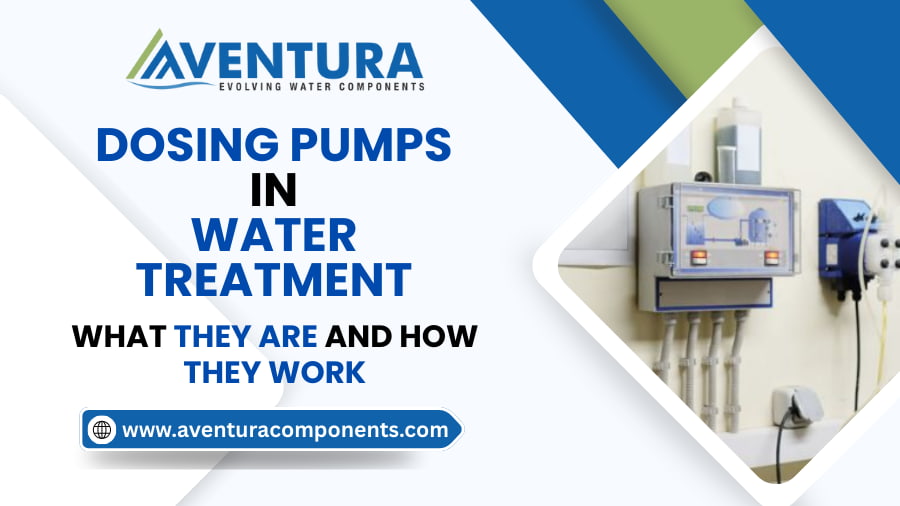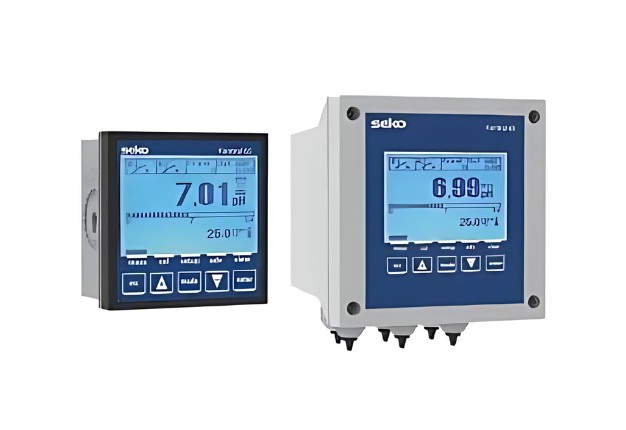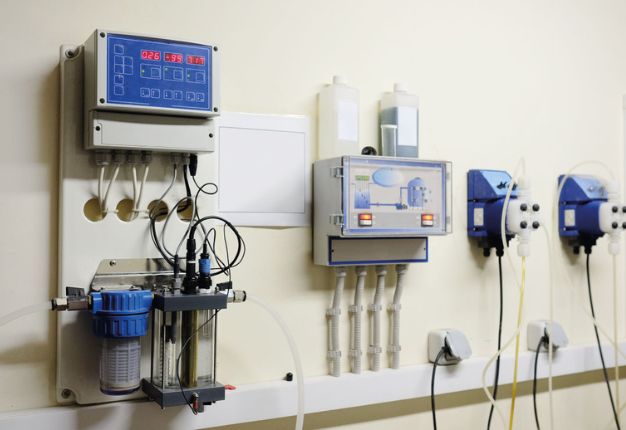
Dosing Pumps in Water Treatment: What They Are and How They Work
We are all aware that water is a valuable resource, but do you know how it is made sure that all homes and industries have access to clean and safe water? Water treatment keeps water safe for use, and this process demands accuracy at every step. A key role is played by dosing pumps in water treatment, as they help in injecting the right amount of chemicals into water systems.
From chlorine to pH adjusters and other chemicals, dosing pumps make sure all impurities are removed efficiently during the water treatment process. If you’re working in the wastewater or water treatment sector in UAE, you must understand how valuable this tool is. Not only does it help you control the accurate flow of chemicals, but it also makes sure all the steps in the water treatment process are compliant with standard regulations.
If you’re involved in modern water treatment systems, this blog is a must-read. Keep reading to learn more about the types of dosing pumps in water treatment, how they work, and more.
Table of Contents
What are Dosing Pumps in Water Treatment?
Dosing pumps in water treatment are metering pumps that are used to inject exact amounts of liquids or chemicals into a water stream or other processes. In water treatment processes, these are used to accurately add disinfectants like chlorine and pH adjustment chemicals. These pumps reduce the risks of under- and overdosing, making sure water quality and safety. Besides this, they are also used in several other industries, like chemical processing and food & beverage production.
Components of a Dosing Pump Used in Water Treatment
Businesses operating in the UAE that usually deal with adding exact amounts of chemicals and other liquids in processes must work with a supplier offering high-quality dosing pumps in Dubai. These may look like simple machines, but their roles in several industries to maintain the quality of water are very important. Although they are available in many types, the following components are usually present in all of them:
1. Storage Tank/ Container
This tank holds the chemicals or solutions that need to be dosed in exact amounts using the dosing pump. This container makes sure the dosing liquid is always safe and ready for use.
2. Metering Pump
This is the main component of the dosing pump, as it pulls the chemical from the tank and delivers it in a controlled amount. Its main work is to maintain accurate dosing during the water treatment and other processes.
3. Drive Mechanism
This component powers the dosing pump and makes it work. It can run on electricity, air pressure, and other systems. Without it, the dosing pump is of no use.
4. Pump Head
This part features the diaphragm or piston that does the pumping action and helps in moving the chemical with each stroke.
5. Suction Line
This pipe serves as the connection between the tank and the pump. It carries the chemical from the container into the pump, helping in the smooth flow of the dosed chemical.
6. Foot Valve
This is present at the bottom of the suction line and prevents the backward flow of the liquid.
7. Dosing Line
This pipe is made of PVC, PE, and stainless steel, and carries the chemical from the pump to the injection point.
8. Injector
This is where the chemical is delivered to the main water line. This is one of the most important components of all types of dosing pumps in Dubai, supplied by trusted suppliers.
9. Control System
This manages the overall working of the pump. Operators can simply adjust a timer or use its advanced automated feature with sensors to ensure the delivery of the right amount of chemical.

How Does a Dosing Pump Work?
Now we are clear that dosing pumps in water treatment systems ensure that an always precise amount of chemicals is delivered. The working of these positive displacement pumps is not very complicated. The pump works by drawing an exact volume of chemical or liquid from the storage tank and then injecting it into a water line at accurate and controlled rates.
A diaphragm or piston within a pump chamber, powered by an electronic, air-powered, or other mechanism, controls the movement of the liquid. The pump head moves the liquid to be dosed through the suction line into the dosing line with every stroke. Lastly, the injector releases the chemical into the main water flow. The pump follows four basic steps to make sure the right amount of chemical is added without any wastage, which are:
1. Suction Phase
In which the piston or diaphragm draws the desired amount of liquid into the chamber from the tank.
2. Compression Phase
In this step, the piston or diaphragm moves to compress the liquid in the chamber by building pressure.
3. Discharge Phase
In this phase, the valve opens to release the exact amount of liquid needed out of the chamber into the system.
4. Repetition
The above three steps are repeated to make sure a consistent and accurate dose of liquid is delivered till the completion of a particular application.

Main Types of Dosing Pumps in Water Treatment
Trusted suppliers offer various dosing pumps in Dubai, as their uses and application requirements across industries are different. Here are the five main types of dosing pumps that are commonly used in water treatment:
1. Electronic Metering Pumps
These are generally used in disinfection and pH control, as they use electronic controls to accurately adjust the flow rate of the liquid being delivered. Besides the automated feature, these are available with a wide range of flow rates.
2. Plunger Metering Pumps
These pumps are usually used in desalination and other high-pressure conditions. They use a plunger mechanism to move the liquid and deliver an accurate flow rate.
3. Diaphragm Pumps
As the name suggests, these pumps use a flexible diaphragm to create a suction and move the liquid. They can handle several fluids, even those with viscous and abrasive substances. These are most used in drinking and wastewater treatment systems.
4. Peristaltic Pumps
These use a flexible tube, which is compressed by rollers to move the dosing liquid. They are best used for sensitive liquids that need gentle handling.
5. Solenoid Pumps
These use a solenoid valve to control an exact flow of liquid. These are generally used in residential water treatment systems.
Key Features & Benefits of Dosing Pumps in Water Treatment
As we discussed above, dosing pumps are positive displacement pumps that are used to deliver a fixed amount of liquid with each stroke. Let us now understand its key features that make this simple tool highly valuable in diverse industries:
1. Accuracy
These deliver consistent volumes of fluid, which is not only important for maintaining water quality but also avoids waste. Operators don’t need to worry about over- or under-chemical dosing, as they maintain highly accurate flow rates.
2. Automation
The modern dosing pumps used in diverse industries feature automated features. This means they can be integrated easily into larger water treatment systems to achieve adjustable flow rates, smooth operations, and meet other treatment needs.
3. Safety
As these pumps make sure only the needed amount of chemicals is added, they prevent overdosing of any harmful chemicals like sulfuric acid.
4. Cost-Effectiveness
UAE-based businesses must invest in high-quality dosing pumps in Dubai, as the accurate dosing will reduce the risk of chemical wastage by overuse. This will not only help you save costs but also help in maintaining a sustainable water treatment process.
Dosing Pump Applications in Water Treatment Systems
Dosing pumps in water treatment are used in several applications, and also help to avoid costly mistakes due to overdosing and underdosing of chemicals. Here are the four main applications of these pumps in the water treatment systems:
1. Disinfection
These pumps are used to inject accurate amounts of disinfecting agents like chlorine to kill bacteria in the water. As they deliver controlled flow, they maintain the quality of water and make sure they are safe to use by preventing overdosing.
2. pH Regulation
Another main application of a dosing pump in water treatment systems is adjusting the pH levels. They are used to add chemicals like sulfuric acid to maintain the optimal pH level during both drinking and wastewater treatment, as improper dosing can lead to corrosion.
3. Coagulation
These pumps can be used to introduce chemicals that help impurities to clump together for easier removal. These pumps inject the exact amount of coagulants to avoid any issues.
4. Anti-Scale Prevention
These pumps are also used to add anti-scale agents, usually in systems, like reverse osmosis. These agents prevent the buildup of mineral deposits in pipes and equipment.
Aventura Components – Your Partner in Smarter Water Treatment
Adding the exact amount of required liquids to the dosing pumps in water treatment helps secure the quality of water, meet regulatory requirements, and avoid costly mistakes. Whether you are involved in municipal water treatment, pharma, food & beverage production, or other industrial plants, with accurate dosing, you can achieve smooth and safe operations.
Choose Aventura Components as your trusted partner to upgrade your water treatment systems with premium dosing pumps in Dubai. We offer a range of top-quality dosing pumps and other water treatment solutions. Moreover, our reliable products make sure not only that your unique needs are met, but also that your operations remain compliant with required standards. Connect with us to take advantage of our 20 years of expertise and quality products available at fair prices.
